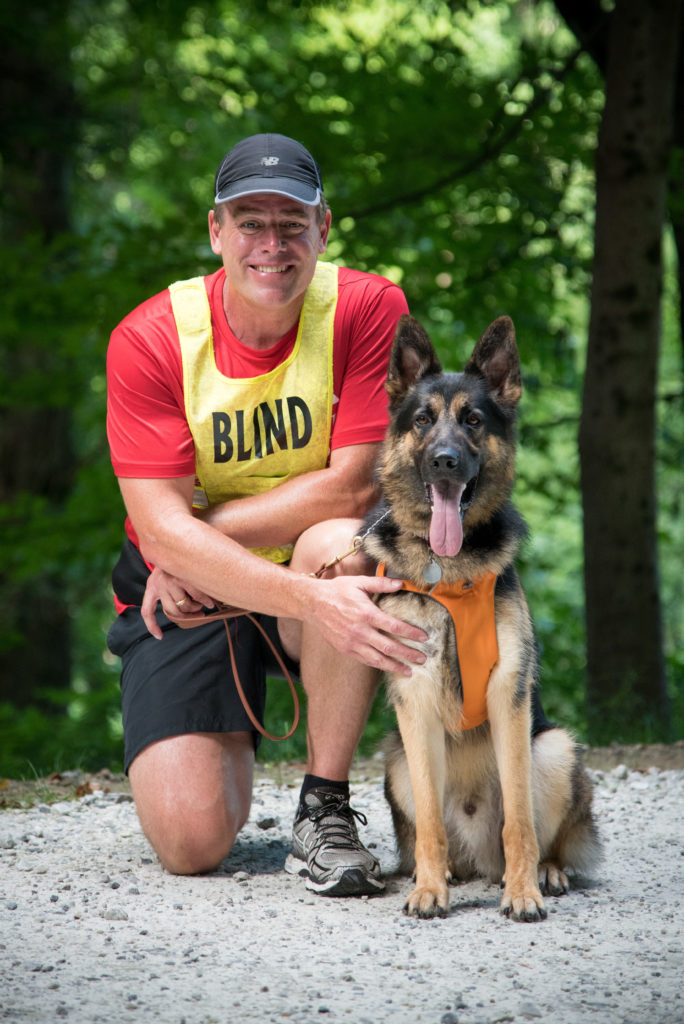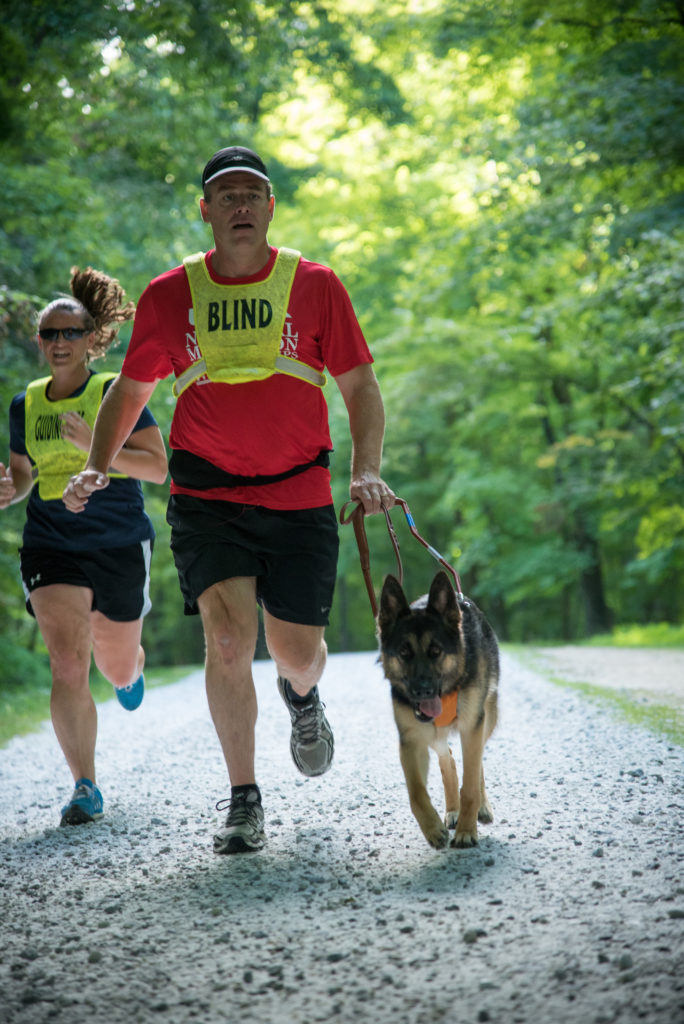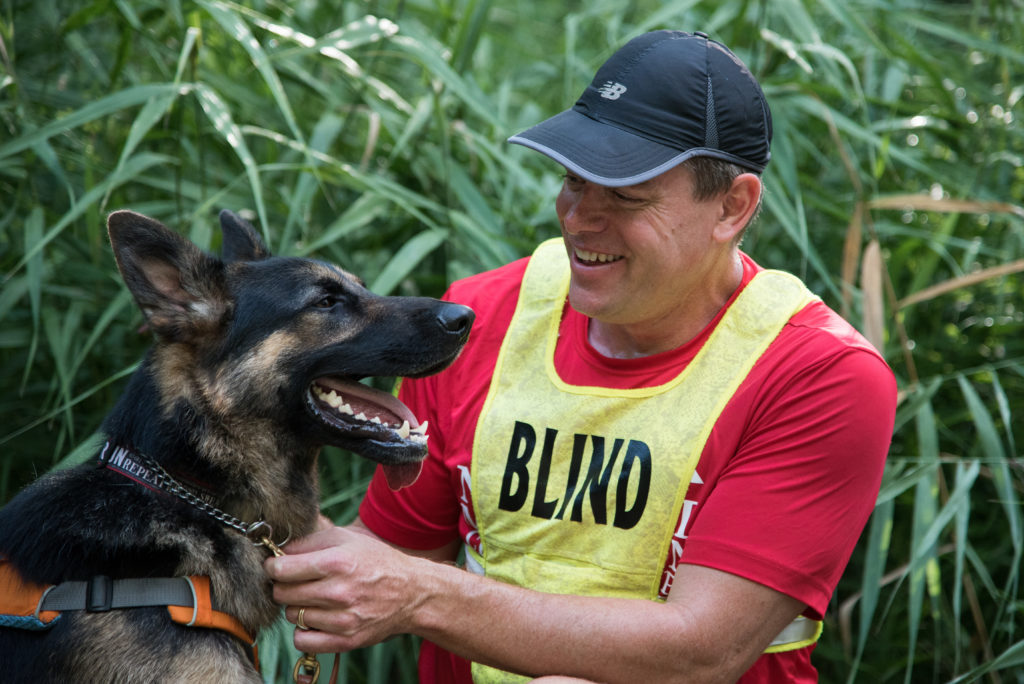Richard Hunter, 48, is a marathon runner. He has finished the American 50 mile endurance run, a 4.5 mile open swim, and even bicycle rides.
He is also blind. by age 22, he had almost all his vision due to a hereditary eye condition called retinitis pigmentosa.
During a tandem bicycle marathon on May 31, 2013, he and his partner were hit by car and Hunter was critically injured. His family again raised the question about a guide dog that could run with him for safety. He just answered he would if there was a group that had running guide dogs. But there wasn’t.
On that same day, Klinger, a German Shepherd Dog, was born at the Whelping Kennel of the Guiding Eye Canine Development Center.
After recovering from his accident, Hunter got back to running. At the Boston Marathon he ran into Thomas Panek, the CEO of a guide dog school. Hunter asked him one simple question that started it all:
“Thomas! You’re the CEO of a guide dog school, you’re a visually impaired marathoner, you have a guide dog, what do you think about having guide dogs that can run with you?”

And that was that. Klinger was to become the first Seeing Eye dog ever to be trained for running through an experimental pilot program called Running Guides at Guiding Eyes.
The Pilot Program
So what’s the difference between this and a regular guide dog?
The running eye dog will have to be physical fit and able to run as well as enjoy it, says Guiding Eyes.
In addition, “Dogs will be expected to stay focused on work, clear the handler of any obstacles, slow for complex portions of the route and stop for changes in elevation just as they are required to do so during normal guide work.”

The dogs will need to be trained a cue for running vs. walking, but will also be trained to stop running if they sense there is a need such as change in terrain, traffic (they will be trained to not run through crosswalks, for example), or anything that may be a potential hazard to his human running partner.
So Far So Good
Guiding Eyes has been happy with how the program is going so far. Since Klinger and Hunter finished the training at the school in August, they have been working at home.

Hunter reports that each run shows improvement and he is “thrilled” with his and Klinger’s success. They have run three to four exercise routes per week since graduating.
The next step? He and Klinger are entered to run in the California International Marathon, taking place in Sacramento, California on December 6, 2015.
Next Steps
Since the program appears successful, Guiding Eyes wants to gauge interest in the program and are asking blind and visually impaired people who would like a running guide dog to contact Ben Cawley, Class Supervisor at bcawley@guidingeyes.org.

The next dog-handler team is set to by Guiding Eyes own President and CEO, Thomas Panek and his current guide dog “Gus.”
As with any new program, monetary support is needed and appreciated! You can help runners gain independence and allow visually impaired people more freedom they ever thought possible by going to “Support Running Guides” and making a donation.
Also, Richard has set up a Text-to-Donate for Running Guides with a goal of raising $10,000. Those interested can text the word “GUIDE” to 71777. So far, he has raised over $3,800. Let’s help him reach his goal!
